Posts Tagged: heuristics
heuristics (not biases), rules of thumb, mental shortcuts, strategies ignoring information


riskyr: A toolbox for rendering risk literacy more transparent
so as to make the solution transparent.
Hansjörg Neth, Felix Gaisbauer, Nico Gradwohl, Wolfgang Gaissmaier
riskyr: A toolbox for rendering risk literacy more transparent
Abstract: Risk-related information — like the prevalence of conditions and the sensitivity and specificity of diagnostic tests or treatment decisions — can be expressed in terms of probabilities or frequencies. By providing a toolbox of methods and metrics, the R package riskyr computes, translates, and displays risk-related information in a variety of ways. Offering multiple complementary perspectives on the interplay between key parameters renders teaching and training of risk literacy more transparent.
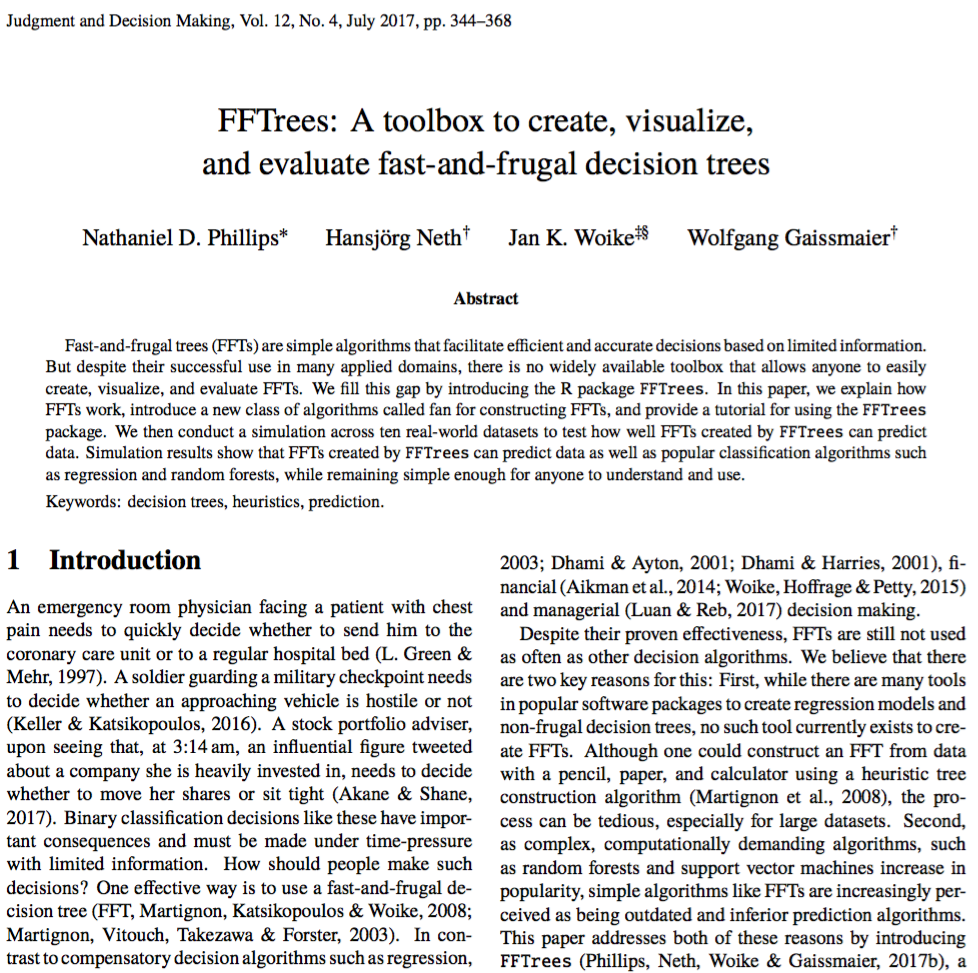
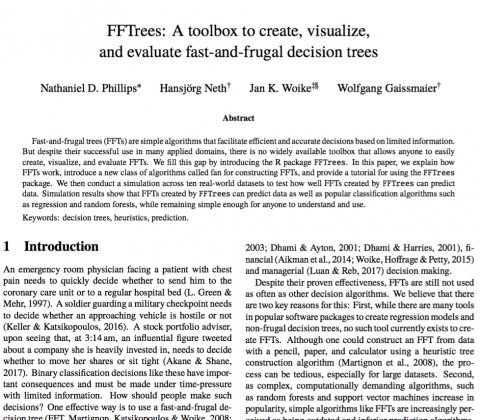
Paper: FFTrees: An R toolbox to create, visualize, and evaluate FFTs
is nevertheless totally incomprehensible to a human expert, can it
be described as knowledge? Under the common-sense definition of this term
as material that might be assimilated and used by human beings, it is not…
Nathaniel Phillips, Hansjörg Neth, Jan Woike, Wolfgang Gaissmaier
FFTrees: A toolbox to create, visualize, and evaluate fast-and-frugal decision trees
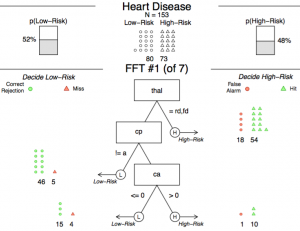
An example of an FFT predicting the risk of having heart disease.
Abstract: Fast-and-frugal trees (FFTs) are simple algorithms that facilitate efficient and accurate decisions based on limited information. But despite their successful use in many applied domains, there is no widely available toolbox that allows anyone to easily create, visualize, and evaluate FFTs. We fill this gap by introducing the R package FFTrees.
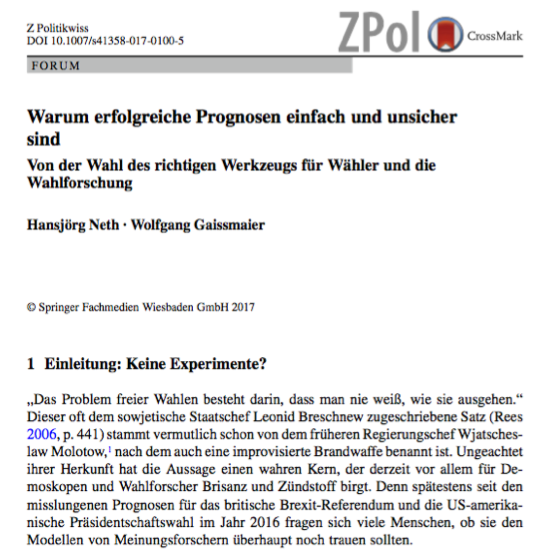
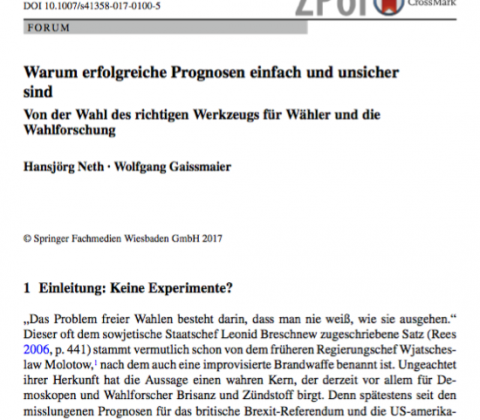
Artikel: Warum erfolgreiche Prognosen einfach und unsicher sind
(Vyacheslav Molotov, 1954, see Wikiquote)
Hansjörg Neth, Wolfgang Gaissmaier
Warum erfolgreiche Prognosen einfach und unsicher sind
Von der Wahl des richtigen Werkzeugs für Wähler und die Wahlforschung
Aus der Einleitung: Für Entscheidungswissenschaftler sind Wahlen – ungeachtet aller Warnungen – ein großartiges und größenwahnsinniges Experiment. Während wir sonst das Entscheidungsverhalten von Individuen und Gruppen in kontrollierten Laborsituationen erforschen, werden bei Wahlen die Meinungen von Millionen Menschen über mehrere Monate systematisch manipuliert und dann ein bundesweites Aggregat ihrer Mehrfachauswahlentscheidungen gebildet, das die Zusammensetzung von Parlament und Regierung und damit die Politik der nächsten Jahre determiniert. Auch wenn das Experiment ethisch nicht unbedenklich und seine Aussagekraft in Ermangelung einer Kontrollgruppe erheblich eingeschränkt ist, finden sich auf der gesamtgesellschaftlichen Ebene viele Elemente wieder, deren Mechanismen wir im mikroskopischen Maßstab aus unseren Studien kennen.
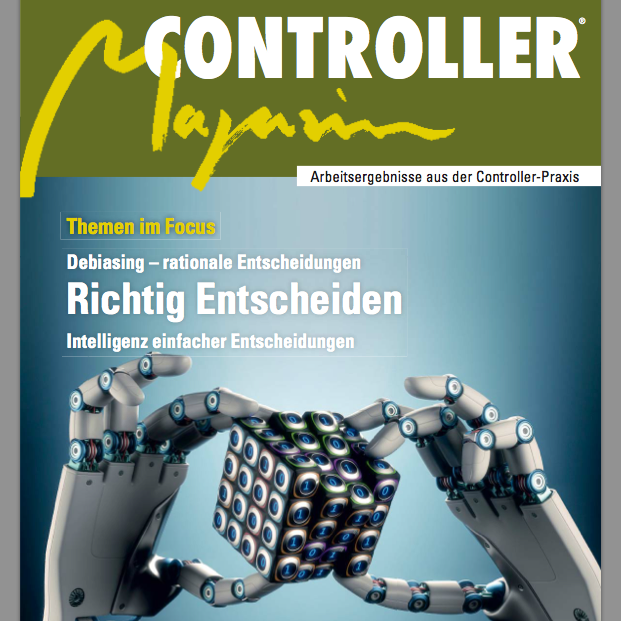
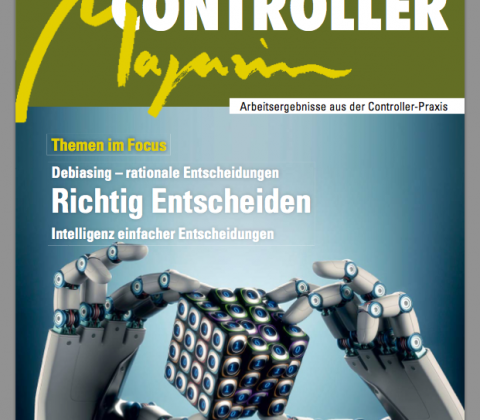
Artikel: Die Intelligenz einfacher Entscheidungsregeln
(Philip K. Dick, 1968)
Wolfgang Gaissmaier, Hansjörg Neth
Die Intelligenz einfacher Entscheidungsregeln in einer ungewissen Welt
Fazit: Unsere Welt mag sicher oder unsicher sein, aber wird immer eine ungewisse bleiben. Wir sollten uns von der Illusion ihrer umfassenden Berechen- und Kontrollierbarkeit verabschieden, ohne deswegen in Angststarre zu verfallen. Denn gute Entscheidungen sind dennoch möglich und beruhen auf einer angemessenen Einschätzung unserer Ausgangslage: Je berechenbarer eine Situation ist („Risiko“), desto mehr brauchen wir statistisches Denken und komplexe Modelle; je unberechenbarer eine Situation ist („Ungewissheit“), desto mehr brauchen wir einfache Heuristiken, einschlägige Erfahrung und Vertrauen auf Intuition (vgl. Abbildung 1). Dabei handelt es sich bei Risiko und Ungewissheit um Pole eines Kontinuums, so dass es sich bei den meisten Situationen um einen Zwischenzustand handeln dürfte. Die Kunst des guten Entscheidens besteht darin, zu wissen, wo auf diesem Kontinuum wir uns befinden, um das jeweils passende Entscheidungswerkzeug geschickt auszuwählen und gezielt zum Einsatz zu bringen. Und sie erfordert den Mut, Entscheidungen nicht zu verschieben oder zu vermeiden, sondern sie beherzt zu treffen und die Verantwortung für ihre Konsequenzen zu tragen.